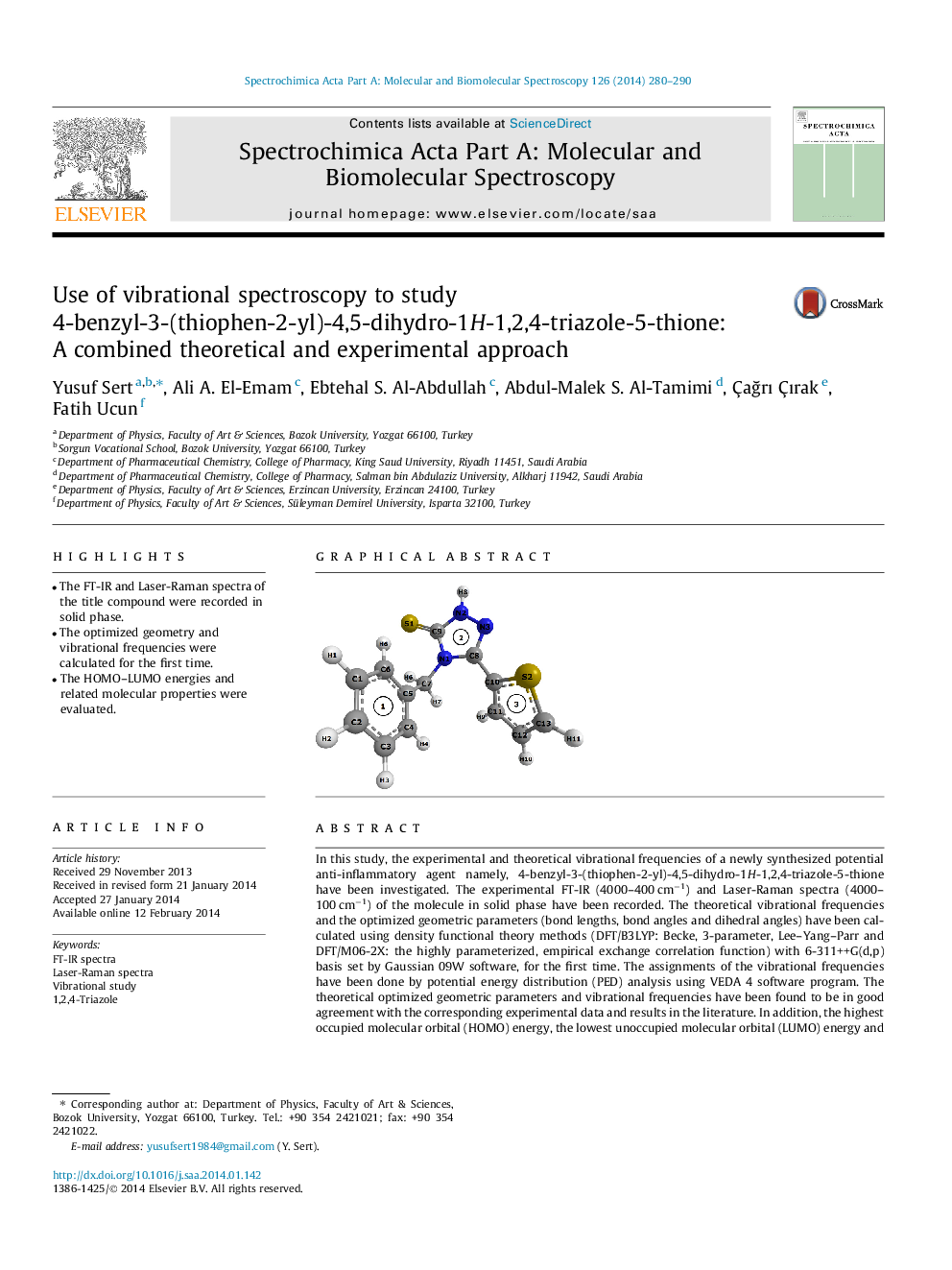| Article ID | Journal | Published Year | Pages | File Type |
|---|---|---|---|---|
| 1229956 | Spectrochimica Acta Part A: Molecular and Biomolecular Spectroscopy | 2014 | 11 Pages |
•The FT-IR and Laser-Raman spectra of the title compound were recorded in solid phase.•The optimized geometry and vibrational frequencies were calculated for the first time.•The HOMO–LUMO energies and related molecular properties were evaluated.
In this study, the experimental and theoretical vibrational frequencies of a newly synthesized potential anti-inflammatory agent namely, 4-benzyl-3-(thiophen-2-yl)-4,5-dihydro-1H-1,2,4-triazole-5-thione have been investigated. The experimental FT-IR (4000–400 cm−1) and Laser-Raman spectra (4000–100 cm−1) of the molecule in solid phase have been recorded. The theoretical vibrational frequencies and the optimized geometric parameters (bond lengths, bond angles and dihedral angles) have been calculated using density functional theory methods (DFT/B3LYP: Becke, 3-parameter, Lee–Yang–Parr and DFT/M06-2X: the highly parameterized, empirical exchange correlation function) with 6-311++G(d,p) basis set by Gaussian 09W software, for the first time. The assignments of the vibrational frequencies have been done by potential energy distribution (PED) analysis using VEDA 4 software program. The theoretical optimized geometric parameters and vibrational frequencies have been found to be in good agreement with the corresponding experimental data and results in the literature. In addition, the highest occupied molecular orbital (HOMO) energy, the lowest unoccupied molecular orbital (LUMO) energy and the other related molecular energy values of the compound have been investigated using the same theoretical calculations.
Graphical abstractFigure optionsDownload full-size imageDownload as PowerPoint slide
